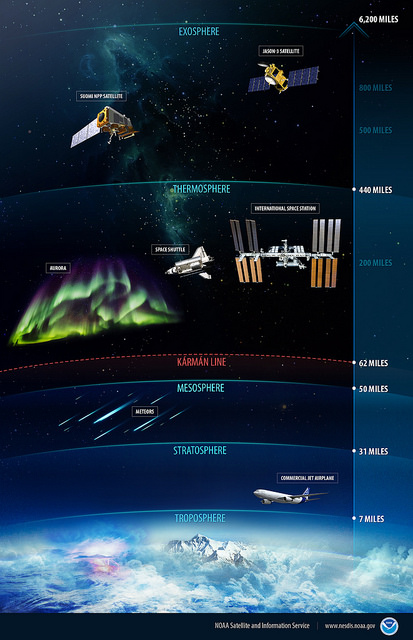Layers of the Atmosphere
Atmosphere
|
The Atmosphere is a layer of gases which surrounds the Earth. It is composed of nitrogen(78%), oxygen (about 21%), argon (about 0.9%), carbon dioxide (0.04%)and a small quantity of other gases and a variable amount of water vapour. It protects us from solar ultraviolet radiation. It is divided into five layers: exosphere, thermosphere, mesosphere, stratosphere and troposphere. |
||
|
Layers of the atmosphere. NOOA satellites. Flickr. (Public Domain) |
Exosphere |
It is 500-1000 km above the Earth's surface. It separates the rest of the atmosphere from outer space. There is no air to breathe here. |
|
Thermosphere |
It is 80-500 km above the Earth's surface. The temperature may reach 1000 degrees Celsius because it receives solar radiation. We can find the International Space Station and some satellites here. | |
|
Mesosphere |
It is 50 to 80 km above the Earth's surface. It is -80 degrees Celsius. Meteorites collide here with gas particles and burn up long before they reach the ground. |
|
|
Stratosphere |
It is 12 to 50 km high. Its temperature is -60 degrees Celsius. It contains the ozone layer, which absorbs ultraviolet rays from the Sun. | |
|
Troposphere |
It is the lowest part of the atmosphere and it is about 12 km high. It contains about 75% of the air in the atmosphere and almost all the water vapour, which forms the clouds and rain. We live here. | |
Activity 1 and 2
Activity 3
Activity 4
Extra Activities
Licensed under the Creative Commons Attribution Non-commercial Share Alike License 4.0
